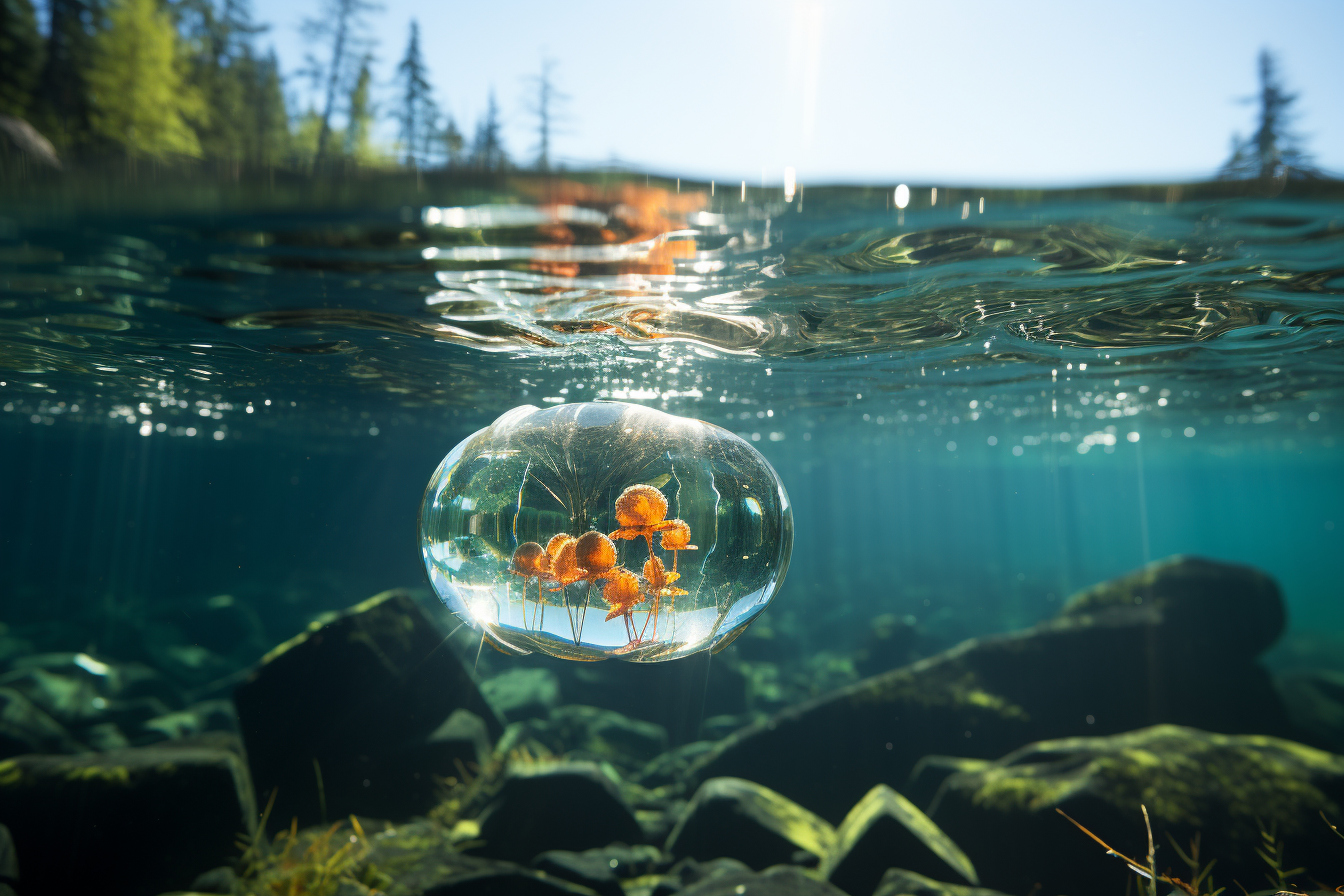The art of freshwater underwater photography is a discipline that combines the bold exploration of the hidden beauty of aquatic environments and the skillful exploitation of precise photographic techniques. This practice provides a sublime experience that reveals often overlooked underwater secrets whose splendor equals, if not surpasses, that of marine scenes.
Exploring Aquatic Mysteries: Advanced Underwater Photography Techniques
Immersed in the transparent liquid, the photographer faces challenges aesthetic and technical. Mastering lighting is one of the main challenges of underwater photography. As sunlight enters the water, it disperses and gradually loses intensity. Judicious use of flashes and spotlights can help restore lost colors and textures.
Composition is also a crucial aspect of underwater photography. Particular attention should be paid to the arrangement of the elements in the frame, with a concern for balance and harmony. Underwater objects, such as fish or aquatic plants, should be strategically placed to attract the viewer’s attention and highlight the natural beauty of the scene.
Finally, we must not forget the technical mastery of the camera itself. Knowing camera settings, such as aperture, shutter speed and ISO sensitivity, is essential to obtaining quality images.
Capturing the beauty of the underwater world in fresh water: Exploration in detail
Freshwater photography offers a unique palette of subjects to photograph. From shimmering schools of fish to elegant aquatic plants to the fascinating details of the river bed, each scene brings its own challenges and rewards.
To properly capture these subjects, you must first understand the environment in which they are found. Freshwater rivers, lakes and ponds each have their own visibility, current and lighting characteristics. Thus, it becomes essential to adapt your photographic approach to these different conditions.
Additionally, there is a need for a variety of specialized equipment to meet these challenges. Lenses of different focal lengths, filters to reduce reflections or enhance colors, and accessories to stabilize the camera or illuminate the scene, can all contribute to the success of your shots.
Finally, patience and perseverance are essential qualities for the underwater photographer. Waiting for the right moment, looking for the best angle, and even diving repeatedly to get the perfect shot can make all the difference between an average photo and an exceptional one.
The importance of ecological interactions for freshwater photography
Venturing into the underwater world to capture its essence requires a thorough understanding of not only photographic techniques but also ecological dynamics. Beyond simply capturing images, a wise photographer recognizes and values the interactions between organisms and their environment.
Freshwater aquatic ecosystems host a myriad of interactions. For example, the symbiosis between certain aquatic plants and the fish that feed on them or even predation between different species. These relationships not only shape the balance of the ecosystem, but also add narrative depth to the photos.
To effectively capture these moments, a prior study of the species present and their behaviors can prove fruitful. Knowing when a particular fish spawns or when a plant flowers allows you to prepare for its release and optimize your chances of capturing the perfect moment.
However, the interactions are not only biological. Abiotic elements, such as rocks, sand and debris, also play a crucial role in image composition. The movement of water around a stone or the way light reflects off a wet surface are aspects that can be exploited to create a memorable photo.
It is also essential to consider the human impact on these ecosystems. The effects of pollution, overfishing or climate change can be visible even in the most remote freshwaters. As photographers, we have a responsibility to document these changes, but also to raise awareness through our images.
Hearing sounds underwater: another dimension of underwater photography
When we talk about photography, we immediately think of the visual aspect. Yet, the sound environment Underwater plays a vital role in the overall experience of the underwater photographer. Although it may seem strange, awareness of water sounds can influence how we capture a scene.
Underwater, sound travels differently than in air. Noises can be amplified and reverberate, providing an extra dimension to the environment. The gentle murmur of a current, the splash of fish moving through aquatic plants or even the crackling of shrimp can enrich the photographer’s experience.
By connecting to this soundscape, the photographer can feel a deeper connection with the environment, which often results in more expressive images. For example, catching the moment when a school of fish is alarmed by a nearby predator can be made easier if one is first alerted by the sound of their panicked movement.
Additionally, for those interested in exploring underwater videography, recording these sounds can add depth and authenticity to their productions. By combining visual quality with sound ambiance, spectators are immersed in a world that is both foreign and fascinating.
Know the behavior of species: anticipate the right shot
The art of underwater photography is not just limited to technical mastery or knowledge of ecosystems. To achieve stunning shots, it is essential to have an intimate understanding of the behavior of the species you wish to photograph. By anticipating the movements and reactions of aquatic creatures, the photographer can position themselves ideally to capture the perfect moment.
Each species has its own rhythms and habits. For example, some fish are more active at dawn or dusk, while others prefer deeper water during the day. Additionally, many aquatic animals have specific rituals related to reproduction, feeding or defending their territory.
For the underwater photographer, this knowledge of species behavior is a real gold mine. This allows him to predict where and when he is most likely to find his subject in ideal shooting conditions. For example, knowing the spawning period of a fish species can provide a unique opportunity to capture scenes of great emotional intensity.
Additionally, this anticipation can also help minimize disruption to underwater creatures. By avoiding surprising or frightening them, the photographer respects their environment and ensures their well-being. This ethical approach is essential to preserve the beauty and diversity of freshwater aquatic ecosystems.













